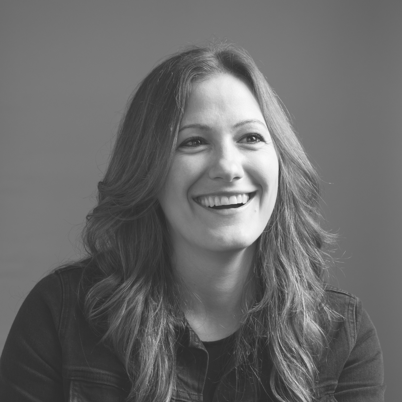Stepping into an Executive Leadership Role for the First Time
Fractured Atlas has undergone some big changes in the past few years, including entering into a period of interim leadership led by Theresa Hubbard, who is also our new Chief Operating Officer.
Often, transition into an executive leadership role is opaque. It’s accompanied by a grand announcement, a nice new headshot, and maybe a large email blast to the organization’s audience. However, behind all of this is a person who is stepping into a position that has to navigate power dynamics, decision making at a larger scale, and deep responsibility to the staff and the community the organization strives to serve – often all at the same time. To offer some insight and transparency into what this transition feels and looks like for Fractured Atlas, we talked with Theresa about what changed for her, what she’s learned, and what she’s looking forward to for the organization.
 Theresa Hubbard, Fractured Atlas COO, Interim CEO
Theresa Hubbard, Fractured Atlas COO, Interim CEO
How did you prepare yourself to step into a larger leadership role?
Theresa Hubbard (TH): By listening. I didn’t want to make any assumptions about how folks felt about the organization and what they think about leadership based solely on my own experience as an employee at Fractured Atlas, so I asked questions and listened. I had conversations with each team to learn more about how they operate and how I might fit into the picture, as well as what did and did not work in their relationships with previous leaders. To prepare for these conversations, I took some cues from The First 90 Days by Michael D. Watkins, and developed a short list of questions, focusing on what has worked and where there was opportunity for change. I also spoke with other leaders and leadership coaches to get varying perspectives on leadership, which helped me get a start on developing my own leadership style, specific to this position.
I also had to train. I had worked at Fractured Atlas for more than ten years before taking on this position, so I had a sense for the collaborative workflows that we used, but there was still a lot I did not know – largely from an operational and financial perspective. It was both enlightening and overwhelming at first, but ultimately also gave me an opportunity to reinforce who owns which procedures (spoiler: it’s rarely me) and ensure that those who are responsible for those tasks feel empowered to make decisions about them on their own.
How has your perspective on work changed? Has the work itself changed as well?
TH: Dramatically. When you lead a specific team or are responsible for a particular function of the organization, it’s really easy to focus exclusively on what’s going on within your own purview - it’s your job to focus on that – but that’s not the job of an executive leader. I worry so much less about individual tasks getting done and focus more on whether or not we’re hitting larger goals that we’ve set our eye on. It’s allowed for a shift in my perspective on the organization, since I can now more clearly see all of the moving parts and how they are interconnected.
The work itself has changed quite a bit, too, as I now spend more time in conversation than I do completing tasks. I have the things I do everyday, like checking on cash flow, but otherwise I spend most of my time checking in with the people who report to me, and in meetings about whatever is relevant at the time. I do keep a list of tasks that need to happen when there is nothing scheduled, but in general, my work has become more about my input than my output.
What is something that has brought you joy while stepping into the role?
TH: Working closely with folks that I haven’t gotten to work with as much in the past has brought me joy. I had the opportunity to work cross-functionally as needed in my previous position, but now I’m regularly working across all teams, and I love it. This allows me to be aware of what each team is working on and to be tuned in to what they think about their work and the arts landscape generally. I can then make connections across teams and encourage collaboration, which is always a joyful experience for me.
On a personal note, I have rediscovered my love of exercise and the outdoors (especially bodies of water). I’ve made a point to get outside and move about, getting myself to any body of water in order to restore my own energy and find joy in the world around me.
What are the unique aspects of being part of an interim or transition leadership position that you’d like for others to know?
TH: Interim periods can easily trigger a fear of the unknown among an organization's employees. Not only are folks asking themselves what the future looks like – for leadership and the organization – but they might also wonder whether the appointed leader has a vision for the organization or if they’re simply a placeholder. This is where distrust can fester because people may be concerned it’s not the person at the helm who is making decisions. Given how unpredictable the past few years have been, it’s important for interim leaders to be tuned in to how much they’re adding to that uncertainty. I think one of the most effective ways to calm these fears is by being as transparent, truthful, and open as possible.
What are unexpected challenges that you faced (or are facing) during the transition to a leadership position?
TH: Knowing my own boundaries and communicating them. As a leader, I want to make myself available to the Fractured Atlas staff to show that I care (because I do), and to build the trust that is necessary to have a functional working relationship. I recently learned that I internalize a lot of the emotions folks bring to me and often take responsibility for addressing any problem presented to me. It’s been difficult to come to terms with the fact that I can’t always provide an answer and that putting so much energy into problem solving can be an emotional drain on me. It also robs individuals of growth opportunities when they are not empowered to develop a solution. So, I’ve started to explore my own boundaries and how I can support others in addressing issues that may arise, not only as a healthy tool for myself, but also to set an example for others in the organization that setting parameters for your own life is encouraged.
How have you thought about leadership in regards to the anti-racism and anti-oppression values that Fractured Atlas continues to integrate into its operations?
TH: I’ve thought about power and hierarchies within organizations especially as it relates to power-hoarding and what it means for a white person to be solely “in charge” of the organization. My response has been to distribute power throughout the organization, starting with the team leads who report to me. I’ve learned and truly believe that shared power is paramount to address oppression as it allows for the folks closest to the problem to be involved in developing a solution, and it increases transparency because more people are involved. I have a responsibility to set parameters so that the decisions fall within our shared purpose as an organization, but the decisions themselves can and should be created by the people who know the most about the issue being discussed.
What are you excited about in this transition chapter of the organization? What are you looking forward to?
TH: We’ve made it a priority this year to focus on organizational culture and have taken steps toward this goal by identifying some areas where we need development – generally trust and open communication – and engaging with a consultant who focuses on Organizational Development through an anti-racism and anti-oppression lens. I’m really excited to embark on this journey with the team and to reimagine Fractured Atlas’s culture that centers care and shared ownership for our values and mission.
What would you want to share (e.g. lessons, advice) with others who may be in a similar situation or are curious about what this transition has been like?
TH: Being an executive leader can be really humbling. It’s a great feeding ground for your inner saboteur. You simultaneously feel like you’re doing everything you can to keep the company afloat and support the people around you, but also like you’re never doing enough. You very rarely hear positive feedback, so you need to think differently about where you look for encouragement. For me, it’s been hearing words like “that’s helpful” or witnessing someone coming to a realization that leads to their own growth.
I also try to come back to the work that we do and focus on the impact that we have on the lives of artists and arts groups around the country and the world. As your view of the organization and work zooms out to see the bigger picture, so does your source of encouragement. It’s helpful for me to look for that positivity in working toward the goals that we set for ourselves and seeing the pride and satisfaction that my co-workers have in the work that we do each day.
About Sophia Park
Sophia Park (she/her) is a writer and curator based in Brooklyn, NY and Gumi, South Korea. She received her B.A. in Neuroscience from Oberlin College and M.A. in Curatorial Practice from the School of Visual Arts. Recently, she worked as a curator for the 15th Gwangju Biennale. Formerly, she worked as the Director of External Relations at Fractured Atlas, a national nonprofit arts service organization and taught entrepreneurship and the arts at New York University. She is part of slow cook, a curatorial collaboration with Caroline Taylor Shehan where they make programs and books, and is a co-founder of Jip Gallery (2018 - 2022). You can probably find her running some silly distance, trying to get back into tennis, or dancing somewhere.


